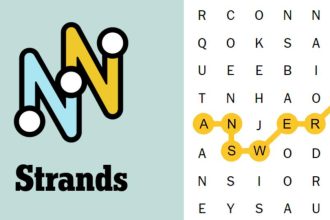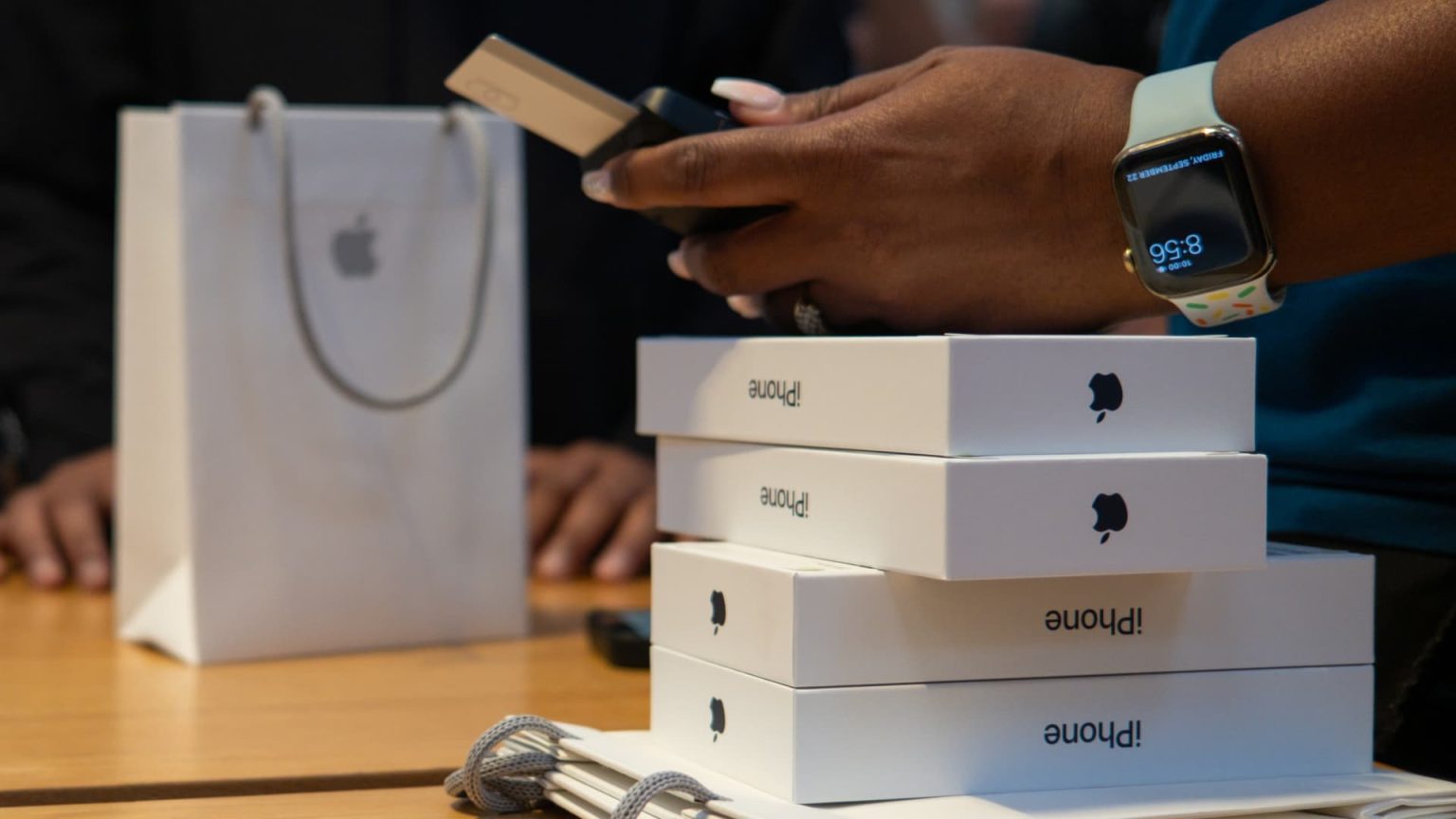It’s been a very long time since I can come to you and say that the sellers that have plagued us since the end of 2021 might finally be moving on. I have become quite torn about all the work we do on individual companies because we know from Tuesday’s cooler consumer price index report that bond yields are the ultimate determinant of the stock market’s direction. Treasury yields pulled back on the latest data showing inflation is slowing, sending equities soaring . I wish that weren’t the case. It means that you can find some excellent companies, buy them, and have them deliver terrific earnings — and it doesn’t mean a thing if rates start climbing. Similarly, you can get bailed out of a lot of junk when rates start going down, as we have seen for the last few weeks. So, what’s the point? Why bother? I think that you have to put yourself in the shoes of the people who, right now, are trying to decide if they want to own the stock of Apple (AAPL) or they want to buy Nvidia (NVDA). It’s easy to say why mess with individual stocks, it isn’t worth it. But I would argue that our homework allowed us to stay in stocks when so many others left the market altogether. We certainly didn’t want to trade Apple and Nvidia – the Club’s two ‘own it, don’t trade it’ stocks – as so many did. We wanted to own them. Think back for a moment about how much it hurt to own Apple at $169 a share. It was a nightmare, wasn’t it? You had all of these people with all of these models and sources, and they were telling you it was a no growth company suffering from an inability to grow. Our work said otherwise. Most sellers hadn’t done enough homework to be able to stay in when those motivated by higher bond yields sold the whole market down, with Apple included. Nvidia’s even harder to own. When the stock was ticking down to $400 a share not that long ago, I started wondering what Nvidia’s next act would be. The U.S. government was cracking down on AI chip exports to China. Who would they sell all of their graphics processing units (GPUs) to? Some were saying that Intel (INTC) and Advanced Micro Devices (AMD) were catching up. But my homework said that there was so much demand for Nvidia’s advanced chips that it wouldn’t have a hard time placing them. So many companies have still not moved to the cloud that the idea that Nvidia’s cards wouldn’t have staying power seemed fanciful. No, what got to me was a chartist saying that Nvidia’s stock had the worst technical shape of any stock in the entire market. Sure enough, there was a head-and-shoulders pattern that was hideous. I couldn’t believe I hadn’t spotted it before. But I had said ‘own it don’t trade it’ because I believe that artificial intelligence needs Nvidia’s chips more than anything else, more than any other part of the food chain. Therefore, I knew that the chart would be wrong. And it was. We are in Nvidia. Those who just acted based on that chart are not. We caught ten days in a row of Nvidia gains. What have they caught? Right now, though, I want to make things clear: you can’t leave this market. There is way too much money on the sidelines. There is way too much hatred for this market still. There are people who believe that stocks outside of the Magnificent Seven aren’t ever going to make you money. Most strategists are on the wrong side of the trade. I don’t really care which stocks we make money in. We just want to buy the stocks that fit the description of companies that can do well even if the Federal Reserve doesn’t cut interest rates anytime soon – because I don’t think they will. I don’t think it is time to go for higher yielding stocks. If anything, I just want to buy stocks of companies that have a tailwind from U.S. infrastructure spending that the Fed can’t hurt and Congress can’t go back on. More broadly, I have been trying to figure out how to express my frustration with some of my mistakes. And then it hit me. The late great country singer Kenny Rodgers once crooned the song, “The Gambler,” in which he told us that you “need to know when to hold them, know when to fold them, know when to walk away and when to run.” I wish I had thought more about those options this year. It would have caused a lot less heartache. As we wind down to the final weeks of the year, I’ve been looking back and thinking about which stocks fit Kenny’s categories. When it comes to knowing when to hold them, what that means is recognizing a company that is doing well when its stock isn’t. We knew, for example, that Starbucks (SBUX) was doing better than its $90 perch. We knew because we had tremendous confidence in its business in China, and we knew its U.S. business wouldn’t skip a beat. We felt the same way about the stocks of Procter & Gamble (PG) and GE HealthCare Technologies (GEHC) when they took big swoons. We knew they had lasting value. We were willing to do battle to keep them – battle meaning picking up some shares lower, perhaps, to sell some higher in order to get a better cost basis. Conversely, the moment that Emerson Electric (EMR) announced that it was going hostile in its bid for National Instruments earlier this year, I criticized management hard. We had bought the company because we thought it was going to help fix our electric grid and make it so we had cleaner energy. We thought Emerson would be the industrial digitizer, the company that would automate American industry. Instead, it got all bogged down in trying to buy some instruments company. So why didn’t I fold them right then? It’s a great question, and the answer is that I often take my cue from a stock’s action and the action was so powerfully positive that I didn’t believe my own judgment that things had gone awry. I let the crowd determine my own thinking. Now that the stock has bounced back a bit after reporting a miserable quarter , we are going to say goodbye. We have sold some stock for two days now, whittling the position lower because the company is just not as well run as we thought. And I think we should sell more because the market is overbought. Now, what about Danaher (DHR) using the Kenny Rodgers analogy? Hindsight says I should have known to walk away, but I have been in and around this stock almost my entire life. It is a stock that I recommended at Goldman Sachs in the 1980s and did well with. And now it is on the worst losing streak in the company’s history. But we’re still holding it because its biomedical business is finally bottoming, and the company has the fire power and the smarts to acquire more high-growth opportunities. It is just a matter of when, not if. And I feel that if we sell it, the next day will be the when. That’s all to say that Tuesday’s explosive rally is going to bring out biotech initial public offerings, and that money will go to Danaher and that stock will work for us. So, that brings me to the walk away and run. How many red flags could I have missed with Walt Disney (DIS)? The answer is that I believed in the franchise value of the company, a franchise value that some good manager had to be able to bring out. I kept thinking that it couldn’t be so hard to turn around the best intellectual-property company in the world. But it’s turned out to be really hard. The stock is finally starting to come back , and I am grateful for that. But my almost-blind allegiance to the franchise led me astray and I have had to do a lot of soul searching about why we didn’t cut and run when we saw there was no Netflix with a theme park here. Finally, when should I have just flat out run? Bausch Health (BHC). You know why I didn’t? Because it fell so fast to a level that I thought it wasn’t worth selling. And then it fell hard again, making a mockery of that earlier judgment. I would walk away from Emerson. And I should have run from Bausch. (See here for a full list of the stocks in Jim Cramer’s Charitable Trust.) As a subscriber to the CNBC Investing Club with Jim Cramer, you will receive a trade alert before Jim makes a trade. Jim waits 45 minutes after sending a trade alert before buying or selling a stock in his charitable trust’s portfolio. If Jim has talked about a stock on CNBC TV, he waits 72 hours after issuing the trade alert before executing the trade. THE ABOVE INVESTING CLUB INFORMATION IS SUBJECT TO OUR TERMS AND CONDITIONS AND PRIVACY POLICY , TOGETHER WITH OUR DISCLAIMER . NO FIDUCIARY OBLIGATION OR DUTY EXISTS, OR IS CREATED, BY VIRTUE OF YOUR RECEIPT OF ANY INFORMATION PROVIDED IN CONNECTION WITH THE INVESTING CLUB. NO SPECIFIC OUTCOME OR PROFIT IS GUARANTEED.
It’s been a very long time since I can come to you and say that the sellers that have plagued us since the end of 2021 might finally be moving on.
Read the full article here





